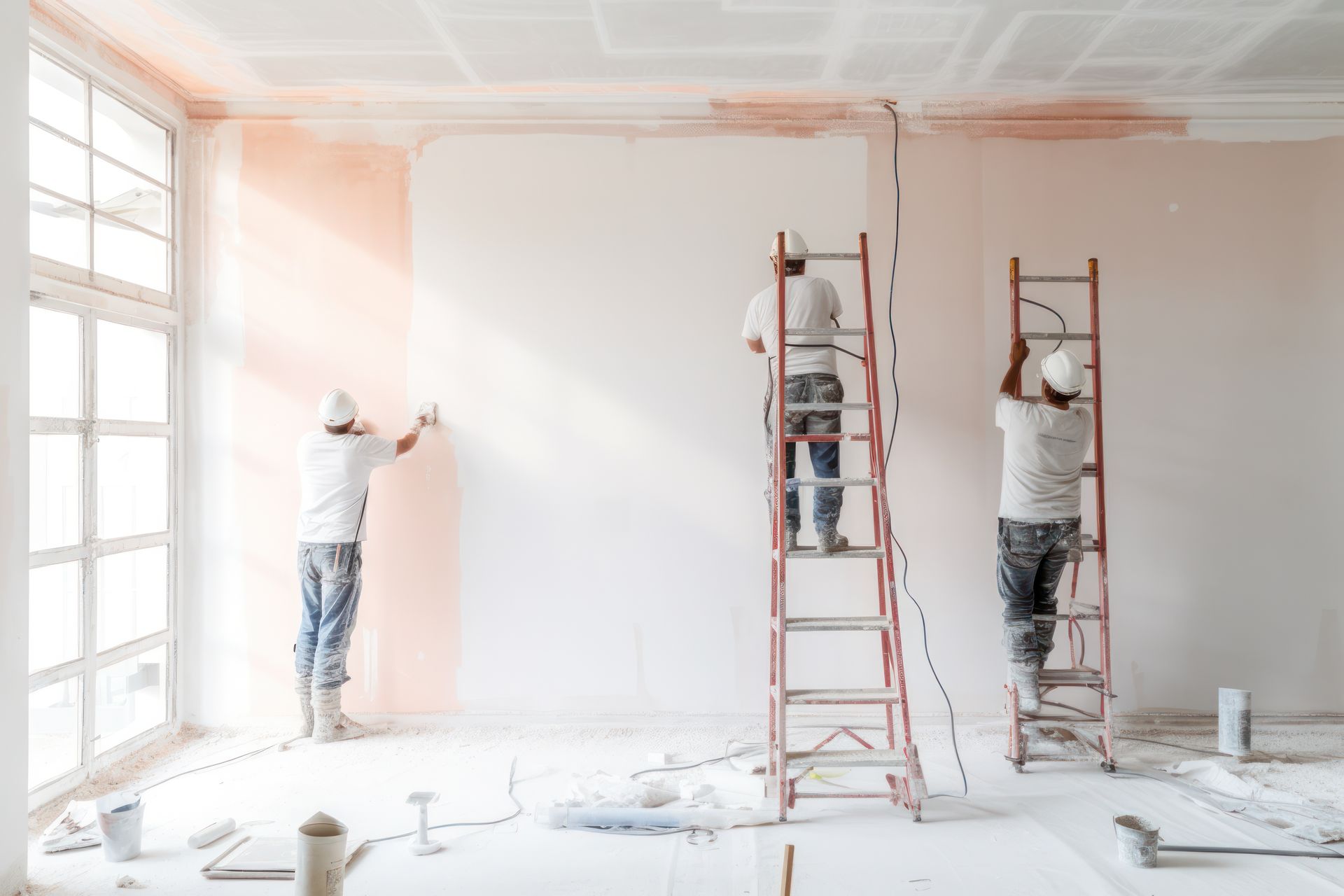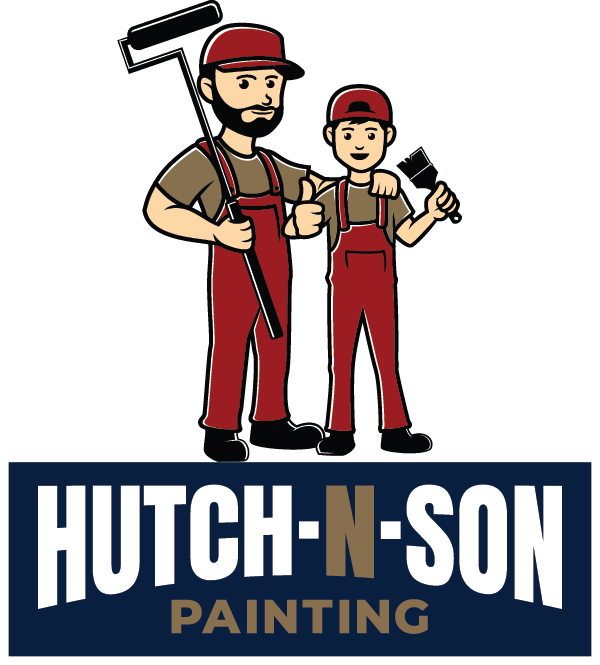Texas kitchens face challenges that would make paint manufacturers in other regions cringe. Between the legendary Texas barbecue sessions that can last all day, the deep-frying traditions that create airborne grease particles, and the oppressive summer humidity that can make indoor cooking feel like working in a steam room, Texas kitchens demand paint solutions that go far beyond what standard home improvement advice typically covers. Understanding how Texas cooking conditions specifically affect paint performance, and choosing the right products and application techniques to handle these extreme conditions, can mean the difference between a kitchen that looks fresh for years and one that requires frequent touch-ups and premature repainting.
The Texas Kitchen Challenge
Texas cooking culture creates unique environmental stresses that most paint formulations weren't designed to handle. The combination of high-heat cooking methods, extended cooking times, and the sheer volume of cooking that happens in Texas homes creates conditions that can quickly degrade standard wall paints. When you factor in Texas summers where outdoor temperatures regularly exceed 100 degrees Fahrenheit, indoor kitchens can become furnace-like environments that test paint durability to its absolute limits.
The humidity factor in Texas kitchens is particularly challenging because it's not just the natural outdoor humidity that affects paint performance. Texas cooking methods generate tremendous amounts of steam and moisture that can persist in kitchens for hours after cooking ends. Chicken fried steak, gumbo, tamales, and other Texas favorites all generate significant steam during preparation, and when this moisture combines with grease particles from frying and grilling, it creates an environment that can cause paint to fail in multiple ways simultaneously.
Grease distribution in Texas kitchens extends far beyond the immediate stove area due to the high-heat cooking methods commonly used. When oil reaches the smoking point during deep frying or when grease spatters from a hot grill pan, these particles become airborne and can travel throughout the kitchen, settling on walls, ceilings, and surfaces that seem far removed from the actual cooking area. Over time, this creates a film that not only affects the appearance of painted surfaces but can also provide a base for dirt and other contaminants to adhere to, creating cleaning challenges that standard paint simply cannot withstand.
Understanding Paint Failure in High-Stress Environments
The science behind paint failure in Texas kitchen conditions involves multiple simultaneous degradation processes that rarely occur in milder climates or less intensive cooking environments. Heat causes paint binders to break down more rapidly, while humidity affects the paint's ability to maintain proper adhesion to the substrate. Grease penetration into standard paint films creates permanent staining and provides pathways for moisture infiltration that can lead to peeling, bubbling, and premature paint failure.
Temperature cycling in Texas kitchens is particularly destructive because the rapid changes from air-conditioned comfort to cooking-induced heat stress cause paint to expand and contract repeatedly. Standard latex paints, which work well in most home environments, often lack the flexibility to handle these extreme temperature swings without developing hairline cracks that become entry points for grease and moisture. Over time, these microscopic failures accumulate and lead to visible paint degradation that requires complete repainting rather than simple touch-ups.
The alkaline nature of many cleaning products used to combat grease buildup can also cause paint degradation over time. Texas kitchens often require more aggressive cleaning solutions than kitchens in other regions, and repeated exposure to these harsh cleaners can cause standard paint formulations to fade, chalk, or lose their protective properties. This creates a vicious cycle where inadequate paint requires aggressive cleaning, which further damages the paint and necessitates even more frequent cleaning and eventual repainting.
High-Performance Paint Technologies for Texas Kitchens
Modern paint technology offers several solutions specifically designed to handle the extreme conditions found in Texas kitchens. Acrylic enamel paints provide superior hardness and chemical resistance compared to standard latex paints, making them much more capable of withstanding repeated cleaning with grease-cutting detergents. These paints cure to form a harder, more durable surface that resists grease penetration and maintains its appearance even under frequent washing.
Ceramic-enhanced paint formulations incorporate microscopic ceramic particles that provide additional hardness and heat resistance, making them particularly well-suited for Texas kitchen conditions. These advanced formulations can withstand higher temperatures without degrading and provide better resistance to grease penetration and staining. While they cost more than standard paints, their superior performance in high-stress environments often makes them more economical over time due to reduced maintenance and repainting frequency.
Moisture-resistant paint formulations designed for high-humidity environments offer another valuable option for Texas kitchens. These paints include specialized binders and additives that maintain adhesion and flexibility even in high-moisture conditions, reducing the likelihood of peeling and bubbling that commonly occurs in humid environments. Some formulations also include antimicrobial additives that help prevent mold and mildew growth in areas where moisture tends to accumulate.
Sheen Selection for Maximum Performance
The choice of paint sheen becomes critically important in Texas kitchens where frequent cleaning is necessary to maintain sanitary conditions and attractive appearance. Semi-gloss and gloss finishes provide the hardest, most washable surfaces and offer the best resistance to grease penetration and staining. While these higher-sheen finishes may show imperfections in wall surfaces more readily than flat or eggshell paints, their superior performance in high-stress cooking environments usually outweighs these aesthetic considerations.
Satin finishes can provide a compromise between durability and appearance in areas that don't receive direct exposure to cooking activities. However, in Texas kitchens where grease and moisture can travel throughout the space, using satin finishes may prove inadequate for long-term performance. The key is understanding that Texas kitchen conditions often require prioritizing performance over traditional aesthetic preferences to achieve satisfactory long-term results.
High-gloss finishes, while sometimes considered too shiny for residential applications, can provide unmatched durability and cleanability in Texas kitchens. Modern high-gloss formulations offer improved appearance compared to older products and provide the ultimate in grease resistance and washability. For homeowners who prioritize low maintenance and long-term performance, high-gloss finishes can provide years of like-new appearance even under intensive Texas cooking conditions.
Surface Preparation for Extreme Conditions
Proper surface preparation becomes even more critical in Texas kitchens because the challenging environmental conditions will quickly reveal any shortcuts or inadequate preparation work. Existing grease contamination must be completely removed using appropriate cleaning agents, and any areas showing paint failure must be scraped, sanded, and properly primed before new paint application. Failure to adequately prepare surfaces will result in premature paint failure regardless of the quality of paint products used.
Priming takes on heightened importance in Texas kitchen applications because the primer provides the foundation for long-term paint performance. High-quality bonding primers designed for challenging substrates can help ensure proper adhesion even on surfaces that have been exposed to grease and cleaning chemicals. Stain-blocking primers are essential in areas where grease staining has occurred, as these stains can bleed through standard paints and cause discoloration over time.
Surface deglossing of existing high-sheen surfaces is particularly important in Texas kitchens where layers of grease may have created surfaces that resist proper paint adhesion. Light sanding or chemical deglosser application ensures that new paint will properly bond to existing surfaces, preventing premature peeling and failure. This preparation step is often overlooked but is essential for achieving professional-quality results in challenging environments.
Application Techniques for Durability
Professional application techniques become crucial when working with high-performance paints in Texas kitchen conditions. These advanced paint formulations often have different flow and leveling characteristics compared to standard paints, requiring adjusted application methods to achieve optimal results. Proper temperature and humidity control during application ensures that paint cures correctly and develops its intended performance characteristics.
Multiple thin coats typically provide better performance than fewer thick coats, particularly in high-stress environments. This application method allows each coat to cure properly and creates a more durable overall finish that can better withstand the thermal cycling and chemical exposure common in Texas kitchens. Professional painters experienced with high-performance coatings understand these application nuances and can ensure optimal results.
Quality control during application includes monitoring environmental conditions, maintaining wet edge techniques, and ensuring proper coverage rates according to manufacturer specifications. These details become more important when working with premium paint products designed for challenging applications, as improper application can negate the performance advantages that justify the higher cost of these specialized coatings.
Color Considerations and Heat Reflection
Color selection in Texas kitchens involves considerations beyond simple aesthetic preferences. Lighter colors reflect heat more effectively than darker colors, which can help reduce thermal stress on painted surfaces and improve overall paint longevity. This becomes particularly important in Texas kitchens where high temperatures are common and air conditioning costs are a significant concern.
Heat-reflective paint additives and specialized formulations can provide additional protection against thermal degradation in extreme temperature conditions. These products incorporate technologies originally developed for industrial applications but are now available for residential use in areas where extreme conditions justify the additional cost. For Texas kitchens that regularly experience extreme temperatures, these specialized products can provide worthwhile protection.
Color stability becomes more important in high-temperature environments where standard paint pigments may fade or shift over time. Premium pigment systems designed for UV and heat resistance help maintain color integrity even under challenging conditions, ensuring that kitchen walls maintain their intended appearance for years rather than requiring repainting due to color degradation.
Maintenance Strategies for Long-Term Success
Even the best paint systems require appropriate maintenance to achieve their full performance potential in Texas kitchen environments. Regular cleaning with appropriate cleaning agents helps prevent the buildup of grease and contaminants that can degrade paint performance over time. Understanding which cleaning products are compatible with high-performance paint systems ensures that maintenance activities support rather than undermine long-term paint performance.
Ventilation management plays a crucial role in paint longevity in Texas kitchens. Proper exhaust fan operation during and after cooking helps remove moisture and grease-laden air before it can settle on painted surfaces. In Texas homes where outdoor temperatures make it tempting to minimize exhaust fan use, understanding the impact on paint performance can help homeowners make informed decisions about ventilation strategies.
Touch-up procedures for high-performance paint systems often differ from standard paint maintenance. These specialized coatings may require specific surface preparation and application techniques even for minor touch-ups, and understanding these requirements helps ensure that maintenance activities preserve the integrity of the overall paint system.
Professional Installation and Long-Term Value
The complexity of paint selection and application for Texas kitchen conditions often justifies professional installation to ensure optimal results. Experienced painting professionals understand the unique challenges posed by Texas cooking environments and have access to specialized products and application techniques that may not be readily available to homeowners. The investment in professional installation typically pays for itself through improved paint performance and reduced long-term maintenance requirements.
Quality assurance during professional installation includes proper surface preparation, appropriate product selection, optimal application conditions, and thorough curing before the kitchen is returned to normal use. Professional painters familiar with high-performance coatings understand these requirements and can ensure that paint systems perform to their full potential in challenging Texas kitchen environments.
When you're ready to upgrade your Texas kitchen with paint systems designed to handle the unique challenges of Texas cooking, the experienced professionals at Hutch-N-Son Painting bring over 35 years of expertise to every project. Since 1985, we've been helping Dallas-Fort Worth area homeowners create beautiful, durable kitchen spaces that can withstand everything from weekend barbecue sessions to holiday cooking marathons. Our team understands the specific demands that Texas cooking places on kitchen paint and has the knowledge, materials, and application expertise necessary to deliver results that look great and last for years. Contact Hutch-N-Son Painting today for a free consultation and discover how professional-grade paint solutions can transform your kitchen into a space that's as durable as it is beautiful.






